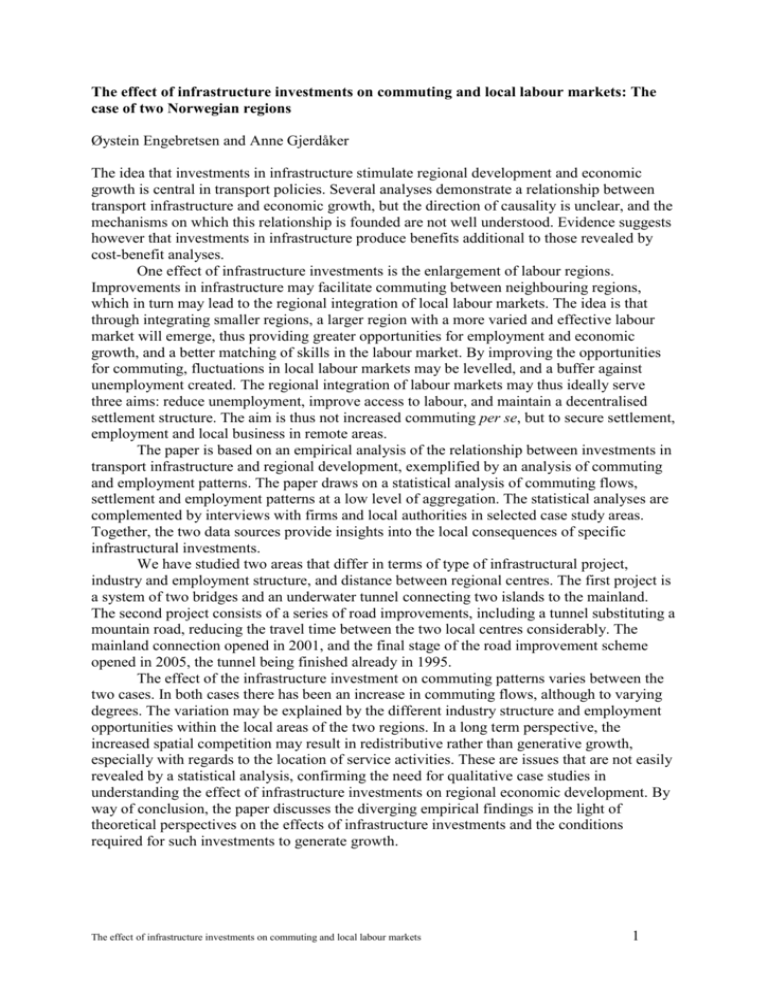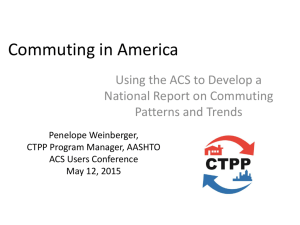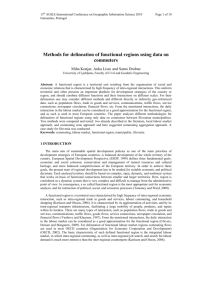The effect of infrastructure investments on commuting and local
advertisement

The effect of infrastructure investments on commuting and local labour markets: The case of two Norwegian regions Øystein Engebretsen and Anne Gjerdåker The idea that investments in infrastructure stimulate regional development and economic growth is central in transport policies. Several analyses demonstrate a relationship between transport infrastructure and economic growth, but the direction of causality is unclear, and the mechanisms on which this relationship is founded are not well understood. Evidence suggests however that investments in infrastructure produce benefits additional to those revealed by cost-benefit analyses. One effect of infrastructure investments is the enlargement of labour regions. Improvements in infrastructure may facilitate commuting between neighbouring regions, which in turn may lead to the regional integration of local labour markets. The idea is that through integrating smaller regions, a larger region with a more varied and effective labour market will emerge, thus providing greater opportunities for employment and economic growth, and a better matching of skills in the labour market. By improving the opportunities for commuting, fluctuations in local labour markets may be levelled, and a buffer against unemployment created. The regional integration of labour markets may thus ideally serve three aims: reduce unemployment, improve access to labour, and maintain a decentralised settlement structure. The aim is thus not increased commuting per se, but to secure settlement, employment and local business in remote areas. The paper is based on an empirical analysis of the relationship between investments in transport infrastructure and regional development, exemplified by an analysis of commuting and employment patterns. The paper draws on a statistical analysis of commuting flows, settlement and employment patterns at a low level of aggregation. The statistical analyses are complemented by interviews with firms and local authorities in selected case study areas. Together, the two data sources provide insights into the local consequences of specific infrastructural investments. We have studied two areas that differ in terms of type of infrastructural project, industry and employment structure, and distance between regional centres. The first project is a system of two bridges and an underwater tunnel connecting two islands to the mainland. The second project consists of a series of road improvements, including a tunnel substituting a mountain road, reducing the travel time between the two local centres considerably. The mainland connection opened in 2001, and the final stage of the road improvement scheme opened in 2005, the tunnel being finished already in 1995. The effect of the infrastructure investment on commuting patterns varies between the two cases. In both cases there has been an increase in commuting flows, although to varying degrees. The variation may be explained by the different industry structure and employment opportunities within the local areas of the two regions. In a long term perspective, the increased spatial competition may result in redistributive rather than generative growth, especially with regards to the location of service activities. These are issues that are not easily revealed by a statistical analysis, confirming the need for qualitative case studies in understanding the effect of infrastructure investments on regional economic development. By way of conclusion, the paper discusses the diverging empirical findings in the light of theoretical perspectives on the effects of infrastructure investments and the conditions required for such investments to generate growth. The effect of infrastructure investments on commuting and local labour markets 1










![functional regions[1]](http://s3.studylib.net/store/data/007779332_2-3d7cc48b74e6750a27a6cfe9914772f8-300x300.png)
